The Advantages And Disadvantages Of Using Laminated Glass Windows
by Robert Fox
What is a laminated glass window? Simply put, it is two sheets of glass that has an extra protective layer of vinyl in between.
There are mainly advantages to using this type of glass window, but we must also mention the downsides as well. Read on to find out more.
Contents
- What Is Window Laminate?
- What Is Laminated Security Glass and How It Is Made?
- Laminated Glass vs Tempered Glass
- The Advantages of Laminated Glass
- The Disadvantages of Laminated Glass
- White Laminated Glass vs Frosted
- Laminated Glass PVB vs SGP
- Monolithic vs Laminated Glass
- A Few Recommended Brands for Laminated Glass
- Conclusion
We will start by explaining what window laminate is, followed by how laminated security glass is made and what it is.
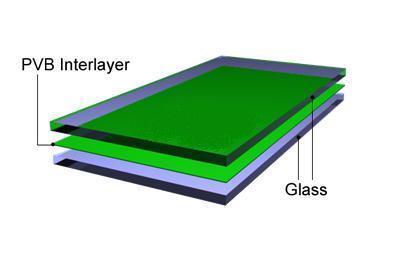
What Is Window Laminate?
As you'll see below, laminated glass basically has more layers than a regular piece of glass. Window laminate is what keeps those layers stuck together.
With two layers of glass, you have a piece of vinyl in between.
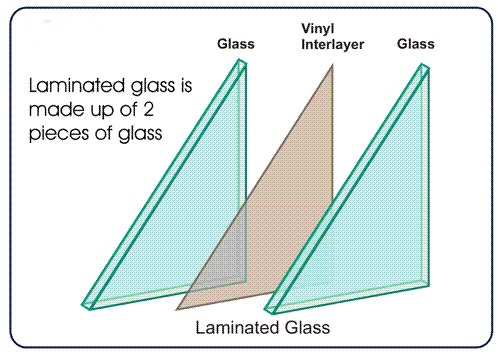
What does that piece of vinyl, or layer of vinyl, do? When a regular piece of glass breaks, you have a hole in it, and shards of glass everywhere. Not so with laminated glass.
This layer basically holds the glass together, so you only have cracks, and minimizes the amount of glass that falls from the cracks.
What Is Laminated Security Glass and How It Is Made?
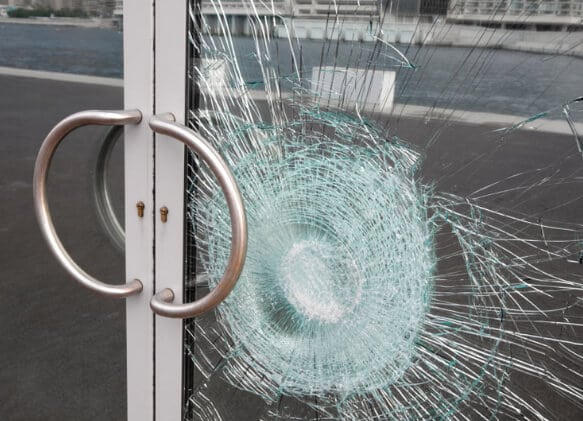
Laminated security glass consists of two or more layers of glass glued together using one or more plastic interlayers using high heat and pressure.
The glass and interlayers can be made in all sorts of colours, performance characteristics, and thicknesses, in order to provide the desired performance and appearance.
Although laminated glass can be broken, its fragments tend to adhere to the plastic interlayer (PVB) and remain mostly intact, reducing the risk of injury.
Next, we explain the difference between laminated and tempered glass.
Laminated Glass vs Tempered Glass
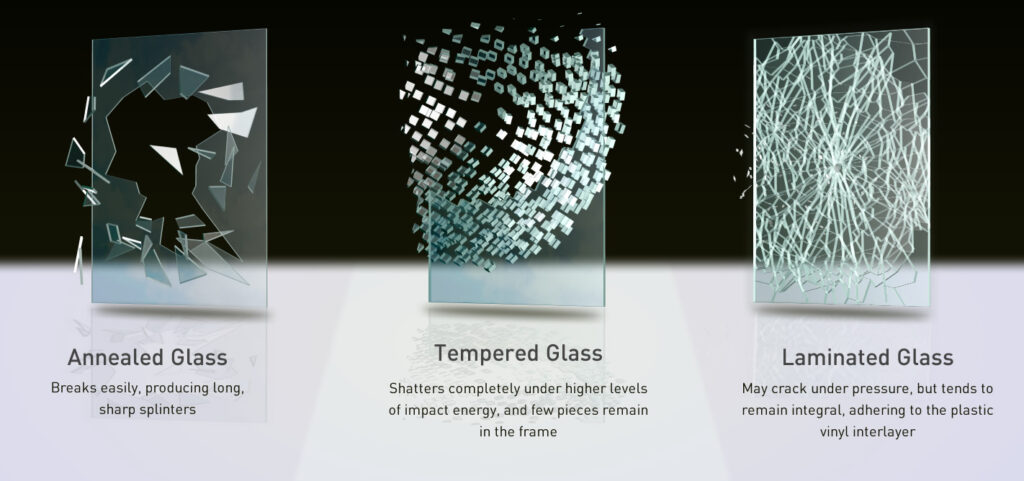
Although tempered glass and laminated glass are very similar, they do have some different properties that set them apart.
Tempered glass is a type of safety glass made with the aid of high heat or chemicals used to strengthen the glass. Tempered glass is usually four times stronger than regular glass of the same size and thickness.
Laminated glass is made by bonding multiple layers of glass together under high pressure and heat. This technique makes a single sheet of glass with multiple layers.
The PVB (polyvinyl butyral) resin used as the bonding material keeps the glass from breaking apart easily and provides great sound insulation.
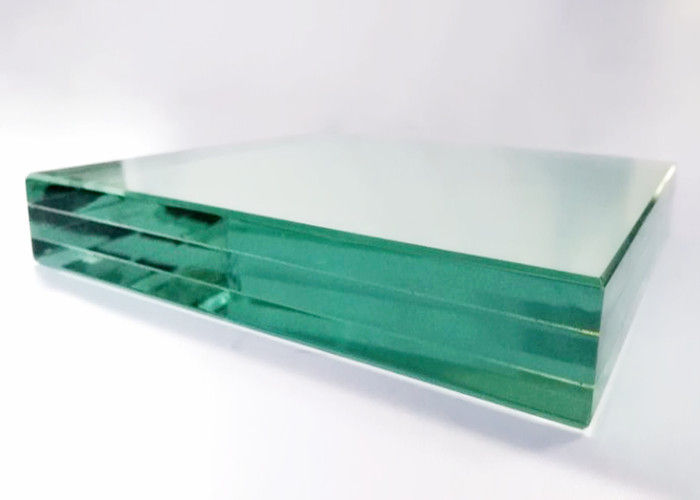
Laminated glass is also very flexible - it will flex before shattering into pieces. It is also worth mentioning that laminated glass blocks 99% of ultraviolet transmission.
Laminated vs Tempered Glass | Laminated Glass | Tempered Glass |
| In General | More resistant to shattering. | Typically stronger and more durable |
| Strength | Laminated glass is composed of two or more layers of glass bonded together with a plastic interlayer. It's more resistant to shattering than tempered glass, but not as strong overall. | Four times stronger than standard annealed glass, making it less likely to break or shatter |
| Heat Resistance | Laminated glass can withstand lower temperatures | Withstand higher temperatures, making it ideal for use in areas like kitchens and bathrooms |
| Impact Resistance | More resistant to impact, good choice for areas where there is a risk of breakage, such as windows in high-rise buildings. | Tempered glass is less resistant to impact |
| Sound Insulation | Provide better sound insulation than tempered glass, making it a good choice for areas where noise reduction is desired. | Less sound insulation than tempered glass |
| Cost | Less expensive than tempered glass | more expensive than laminated glass, due to the increased strength and heat resistance. |
| Applications | Commonly used in windows and skylights | Often used in applications where safety is a concern, such as in car windshields and shower doors |
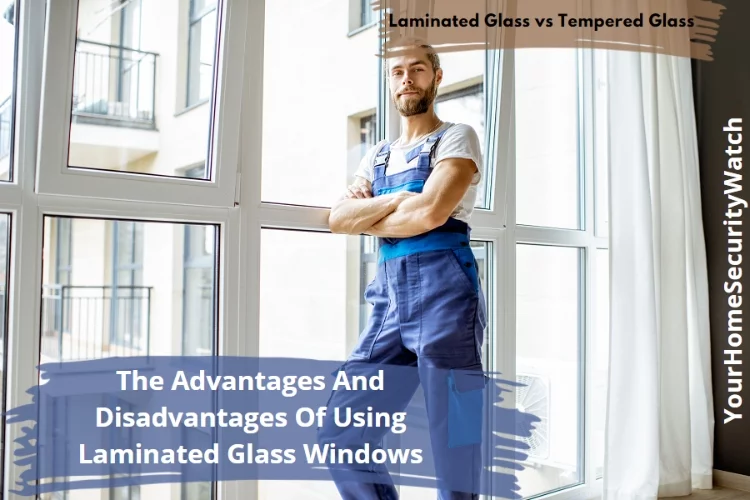
As you can see, there are a few key differences between laminated glass and tempered glass. When choosing between the two, it's important to consider the strength, heat resistance, impact resistance, sound insulation, and cost to decide which type of glass is right for your needs.
Moving on to the advantages of laminated glass…
The Advantages of Laminated Glass
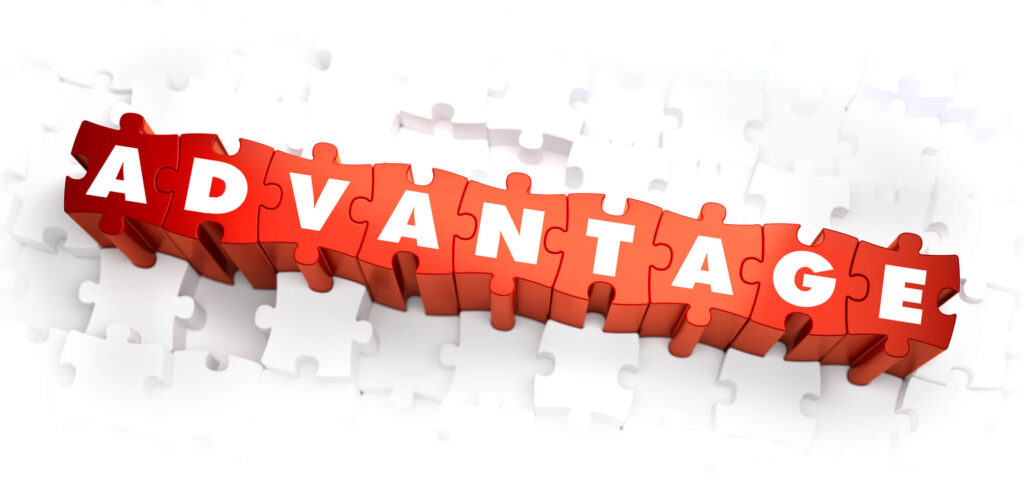
1. Laminated Glass Is Less Dangerous When Broken
If you are concerned about break-ins in your neighborhood, regular safety-standard glass is liable to break quite easily when impacted.
This means, in one swift blow, a burglar could have access to your home.
Not only that, but if your window were to break for any reason at all, the way in which is breaks is far more dangerous with normal glass and can lead to serious injury.
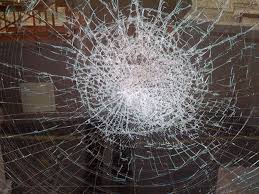
With laminated glass windows, the chances of being cut by the glass if its broken is greatly reduced.
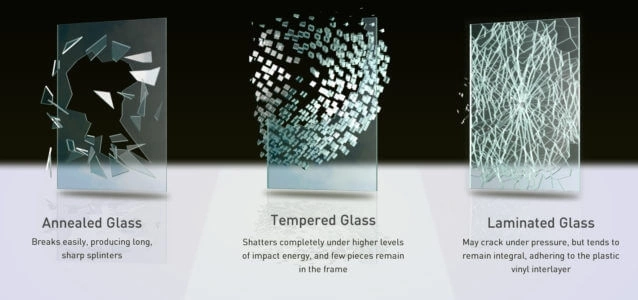
This is due to the fact that the inner vinyl protective layer prevents the glass from shattering and being scattered across your floor or yard.
Similar to safety glass, the shards of glass will stick to the vinyl.
2. Burglars Can't Use Glass Cutters
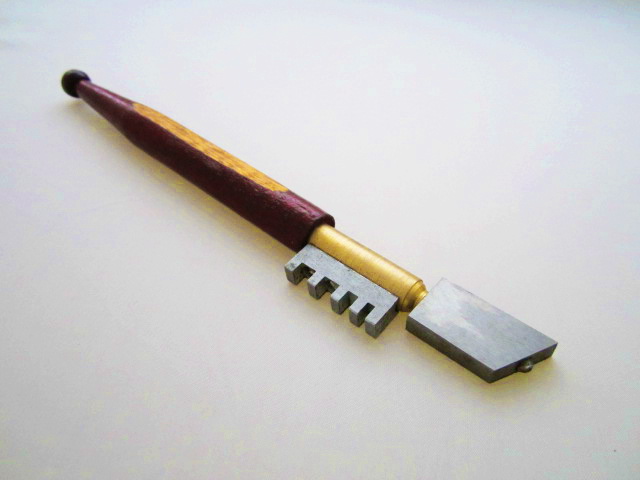
Because laminated glass can't be cut from the outside, this makes it impossible for a burglar to use a tool like a glass cutter to gain access to your home, and greatly reduces the risk of burglary in this way.
So, is laminated glass burglar proof? Well, not exactly, but it still helps quite a bit. Aside from the burglars not being able to use glass cutters, they also can't shatter the glass on windows and doors and open them by pushing their hand inside.
If a burglar does try to break your window, they'll be left with cracks in the glass. No hole, and no way to get inside. If they try glass cutters, the best they can do is get through the outermost layer, but they can't get through the rest. The most likely outcome is that even if they do try, they'll give up quickly, and leave.
3. Less Sound Transfer
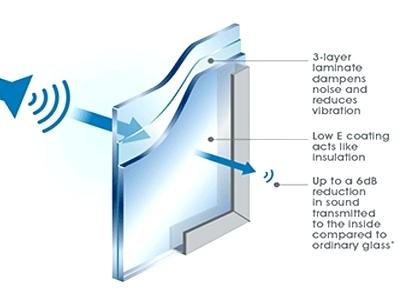
If sound is a concern of yours, consider the fact that laminated glass greatly reduces sound going in or out of your house as it passes through a laminated glass window.
If you live in a neighbourhood with plenty of traffic, whether it be planes, trains, automobiles, or people, we all know that these things can be very annoying and sometimes the noise can be distracting, to say the least.
Laminated glass windows can really help with this type of problem.
On the other hand, maybe it is your house that produces a lot of noise and you want to keep it in. Does your offspring practice a musical instrument? Laminated glass is equipped with sound-deadening features that acts as sound insulation for whatever room you use it with.
This way, even if your kids' band is getting really good at playing that song by "Slint", you can still barely hear it because you've taken the liberty to properly soundproof things.
Also, laminated glass windows are also great for blocking the sound of neighbours if your houses happen to be close together.
Pro Tip - Try using two panes instead of one per window, and create a pocket of air in between them. This is an old soundproofing technique which works extremely well with two panes of laminated glass.
4. UV Protection
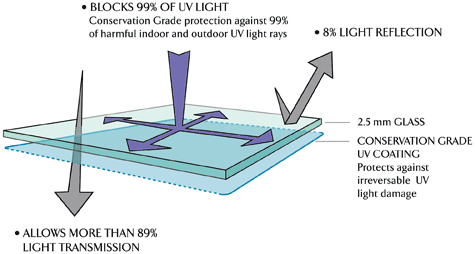
As you probably know, ultra-violet light from the sun has a way of fading some of our favourite things, such as carpets, curtains, and furniture.
When we use normal, non-laminated glass windows, this will allow for the UV rays to come through and fade everything there is to fade.
Of course, you can always close the curtains, but something else you can do is install laminated glass windows, which contains a special film that blocks most of the UV light from coming in.
5. Impact Resistant
Depending on where you live, there are certain threats posed by nature which can sometimes shatter a normal window with ease.
We're talking about forces of nature, such as a tornado, a hurricane, or even a thunderstorm.
With laminated glass windows, you are provided with the maximum amount of protection that a residential window can offer.
Also, if your window does break, it won't be in such a dangerous manner as we explained early when discussing impact resistance and shattering.
Laminated glass has a tendency to stay in one piece due to the inner lining, and hence you don't have the same concerns as you would with normal glass.
Next, we bring you some of the disadvantages of laminated glass.
The Disadvantages of Laminated Glass

Poor Installation Can Lead To Many Problems
The number one way that you can not reap any of the benefits of laminated glass is to install it incorrectly.
For instance, to take full advantage of the sound-dampening properties of laminated glass, it must be installed correctly with the exact right fit and with sufficient airspace between the two panes.
If this is done incorrectly, it may not work as needed. You may need to consult a professional for this job if you are not one yourself.
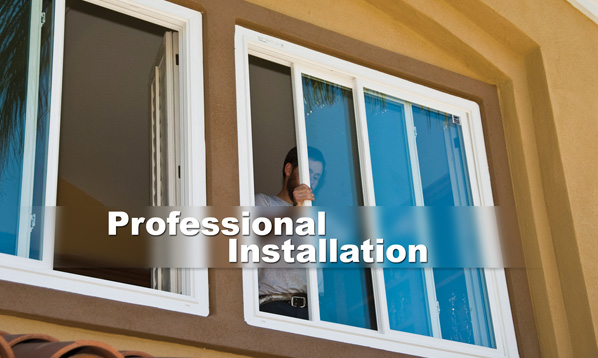
One other thing you can consider is combining the use of laminated glass with non-laminated glass, and this is particularly useful for windows that don't ever open such as cellar windows.
You may need to get creative in this sense and think about which windows could use the most protection and where they are located.
More Expensive Than Other Types of Glass
There are several reasons why laminated glass is more expensive than other types of glass. Firstly, the manufacturing process is more complex and requires specialized equipment. Secondly, the materials used in the construction of laminated glass are also more expensive. Finally, the installation process is also more complex and time-consuming. All of these factors contribute to the higher cost of laminated glass. However, the benefits of this type of glass make it worth the investment for many people.
White Laminated Glass vs Frosted
When it comes to choosing between white laminated glass and frosted glass, there are a few key considerations to keep in mind. Both options have their own unique benefits that can make them ideal for different purposes.
White laminated glass is known for its durability and strength. This makes it an ideal choice for areas where safety is a concern, such as in windows and doors. It also provides a higher level of privacy than frosted glass.
Frosted glass, on the other hand, is more translucent than white laminated glass. This makes it a better choice for areas where you want to allow some light in but still maintain privacy. It can also be used to create an interesting visual effect.
When deciding between white laminated glass and frosted glass, it is important to consider the specific needs of your project. If safety is a primary concern, then white laminated glass may be the better choice. If you are looking for a more decorative option, then frosted glass may be a better fit. Ultimately, the decision should be based on what will best suit the needs of your particular project.
| White Laminated Glass | Frosted Laminated Glass |
| Durability and Strength | More translucent |
| Ideal choice for areas where safety is a concern | A better choice for areas where you want to allow some Light |
| Higher level of privacy | Lower level of privacy |
| Mainly used in windows and doors | Used to create an interesting visual effect |
Laminated Glass PVB vs SGP
There are two main types of laminated glass: PVB and SGP. Both have their own advantages and disadvantages, so it's important to choose the right type for your needs.
PVB is the most common type of laminated glass. It's made by combining two or more pieces of glass with a layer of PVB in between. PVB is a strong plastic that helps hold the glass together if it breaks.
SGP is another type of laminated glass. It's made by combining two or more pieces of glass with a layer of SGP in between. SGP is a stronger plastic than PVB and can help hold the glass together even better if it breaks. Plus, it's a patented material that is five times stronger than PVB.
Which type of laminated glass is right for you? That depends on your needs. If you need the strongest possible glass, then SGP is the way to go. However, if you don't need the extra strength, then PVB may be a better choice.
| Laminated Glass PVB | Laminated Glass SGP |
| A layer of PVB in between glasses | A layer of SGP in between glasses |
| PVB is a weaker plastic than SGP | SGP is a stronger plastic than PVB by about 5 times and pateted |
| Less Costly | More Expensive |
| has good UV resistance, used in residential and commercial applications but may yellow over time when exposed to sunlight | Excellent UV resistance, filtering out up to 99% of UV rays |
PVB laminated glass is the most common type of laminated glass used in residential and commercial applications. It is less expensive than SGP and provides good optical clarity. PVB also has good UV resistance and can filter out up to 99% of UV rays. However, PVB is not as strong as SGP and may yellow over time when exposed to sunlight.
SGP laminated glass is the stronger of the two types of laminated glass. SentryGlas Plus is five times stronger than PVB and does not yellow over time. It also has excellent UV resistance, filtering out up to 99% of UV rays. SGP laminated glass is typically more expensive than PVB laminated glass, but it provides superior strength and clarity.
Monolithic vs Laminated Glass
There are two main types of glass that are used for windows and other applications: monolithic glass and laminated glass. Monolithic glass is a single piece of glass that is cut to size and shape. Laminated glass, on the other hand, consists of two or more pieces of glass that are glued or fused together.
Each type of glass has its own advantages and disadvantages. Monolithic glass is less expensive than laminated glass and is easier to produce. However, it is also more fragile and can break more easily. Laminated glass is stronger and more shatter-resistant, but it is also more expensive.
Which type of glass is right for your application will depend on your specific needs and budget. Monolithic glass is a good choice for applications where cost is a primary concern, while laminated glass is a better option for applications where strength and shatter-resistance are more important.
A Few Recommended Brands for Laminated Glass
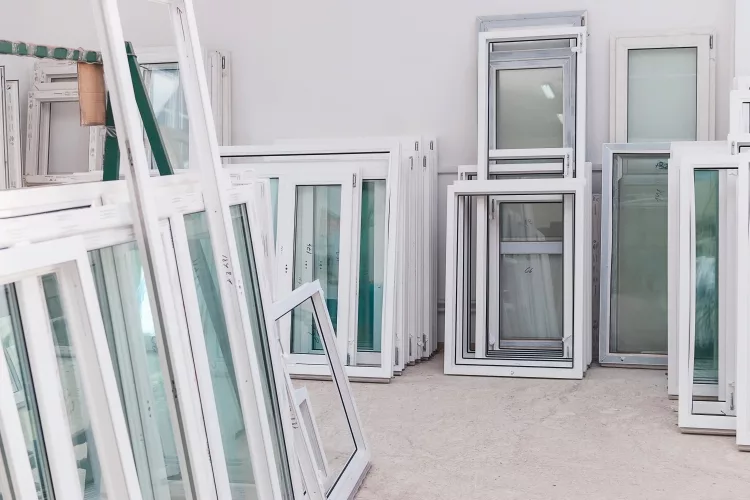
Below, you'll find a list of some of the best brands when it comes to laminated glass, and a bit of info about them.
SGC International Inc.
You can find the website for SGC International Inc. here, and as far as laminated glass, as well as architectural glass goes, SGC International have been in the business for around 30 years. They're located not just in North America, but in Asia as well, and they supply various types of glass for various uses, such as laminated glass, silkscreened glass, tempered glass, fireproof glass etc. With an excellent reputation, you can rely on them for your laminated glass needs.
Saflex (Eastman)
Saflex is a brand that's under Eastman, a global specialty chemical company. You can find the Saflex (Eastman) website ere, has information on all their products. As a brand, Saflex have been around since 1937, and they've mostly worked with glass fabricators and automotive engineers. They use Saflex polyvinyl butyral (PVB) interlayers for laminated glass, and they have a host of architects and engineers using their products.
Cardinal Glass Industries
Even though they started off small, Cardinal Glass Industries currently has over 6,000 employees at 37 locations throughout the US. You can find the Cardinal Glass Industries website here, and they strive to design and make some of the most advanced residential glass products you can buy. They are a corporation, and if you're interested in laminated glass, you'll most likely be doing business with Cardinal LG Company, which is the subsidiary in charge of laminated glass production.
Guardian Glass
With over 160 countries on five continents working with Guardian Glass, they're one of the largest glass manufacturers in the world. They are based in Michigan, but they have over 18,000 employees throughout facilities all over the world. Their goal is to build structures that will enhance people's lives while protecting the environment. They have an entire Science and Technology Center that's dedicated to make glass perform in completely new ways. This is the Guardian Glass website, where they've got all their products there for you to take a look at.
Conclusion
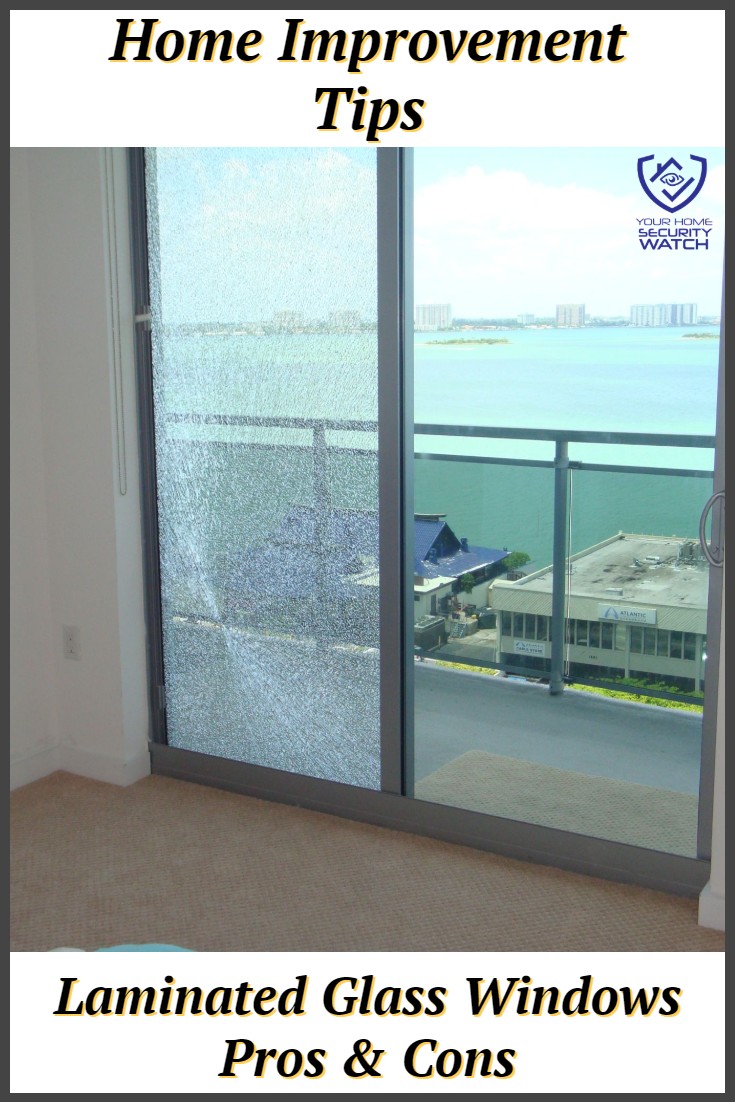
When it comes to laminated glass, the advantages clearly outweigh the disadvantages. Laminated glass has multiple benefits and applications, but have you yourself used it? Once installed, what do you think of it? Comment below and let us know your thoughts.
Related posts:
- What Is A Mortise Lock?
- Bump Proof Locks - Schlage And More (Our Top 3)
- Apartment Security Tips for Renters' Guide
 |
 |
 |
 |

About Robert Fox
Rob Fox is a former hydro worker who used to teach self defence in Miami for 10 years. He's currently enjoying his retirement, playing cribbage and golf with his buddies, locksmithing and home security in his spare time. Rob is an avid reader, and has even written a few books on the subject of self defence.
Thoughts on "The Advantages And Disadvantages Of Using Laminated Glass Windows"
 |
 |
 |
 |
Check These Out
You can Get FREE Gifts. Furthermore, Free Items here. Disable Ad Blocker to receive them all.
Once done, hit anything below
 |
 |
 |
 |